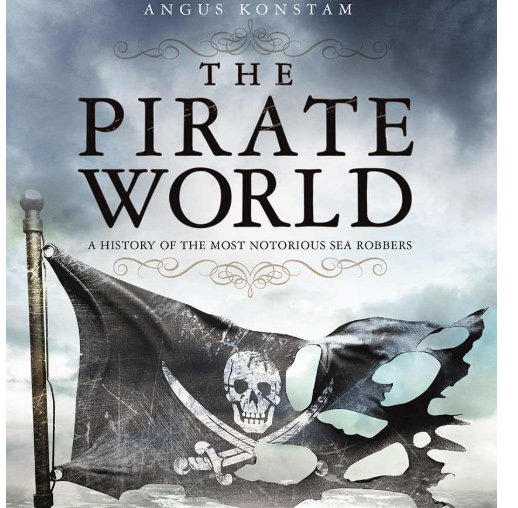The Pirate World: A History of the Most Notorious Sea Robbers
Book review

The Pirate World: A History of the Most Notorious Sea Robbers, Angus Konstam, Osprey Publishing, 2019, 336p, £25-00. ISBN 976-1-4728-3097-5
Angus Konstam very successfully blends a narrative of how piracy has been a challenge to settled society for at least two thousand years with some very important insights. He explains how the practical knowledge that long-distance sailors acquired from the 16th Century onwards enabled them to exploit Trade Winds and recognised ocean currents to maximise their opportunities. He also gives some archaeological data which confirms that the pirates, seen by many as larger than life and legendary, did really operate on certain sites which have now been excavated and analysed. The explanation of how we should understand the various terms – pirate, privateer, buccaneer – and how they came to be adopted is very instructive but, as the writer observes latterly, they were all criminally-intent, even if some of their ‘letters-of-marque’ gave them a degree of legitimacy in some circumstances.
Many areas affected by piracy are explored in detail. It is possible that some readers will be surprised by the universality of the problem and how, in areas such as the Caribbean and the Mediterranean, the scale of piracy ebbed and flowed in relationship to the determination or capacity, or indeed interest, of the adjacent political powers to intervene; and how some of the modern-day trouble spots, such as the Somalian littoral, the Malacca Straits, the South China Sea and remoter parts of the Philippine Archipelago, have experienced piracy as a long-term and persistent problem.
Towards the end Angus Konstam addresses the issue of how our modern-day view of piracy may have been affected by writers such as Robert Louis Stevenson in his Treasure Island and reminds us that this is a gloss imposed on a very real human experience, frequently with tragic consequences.
This is a well-illustrated book, with a series of very helpful maps, and highly commended.

